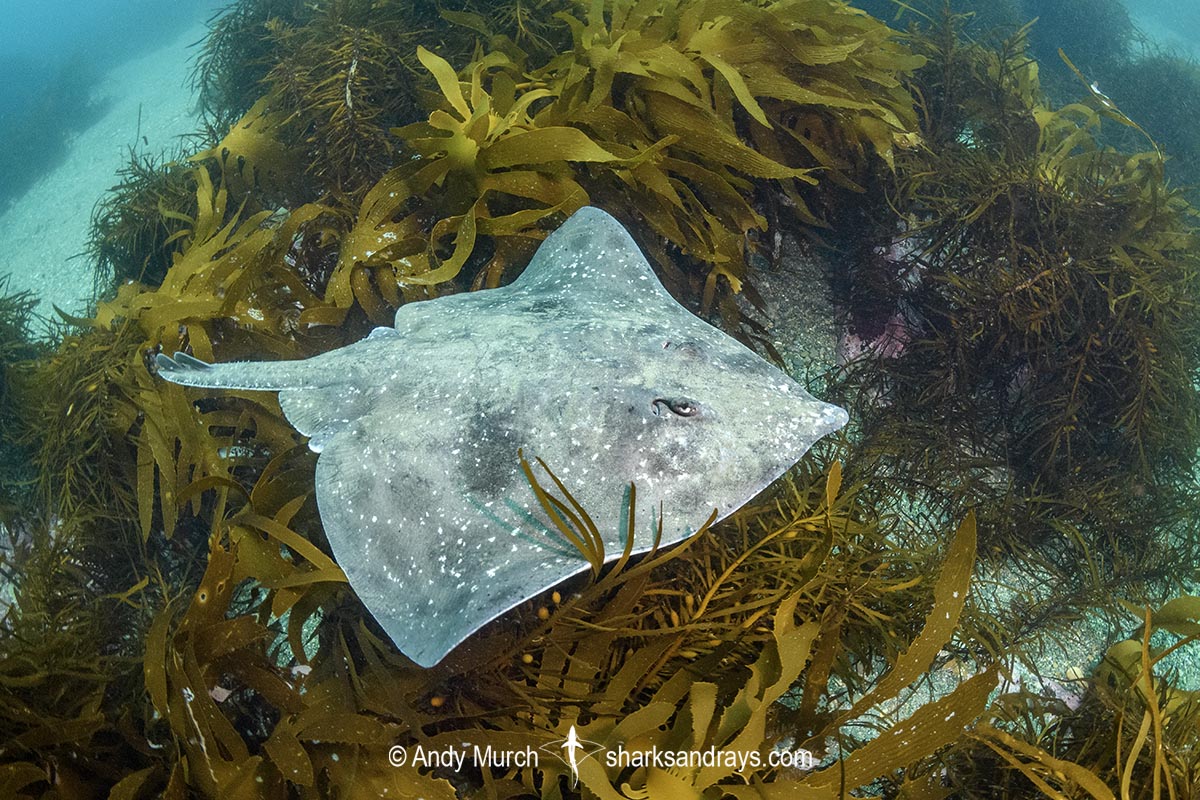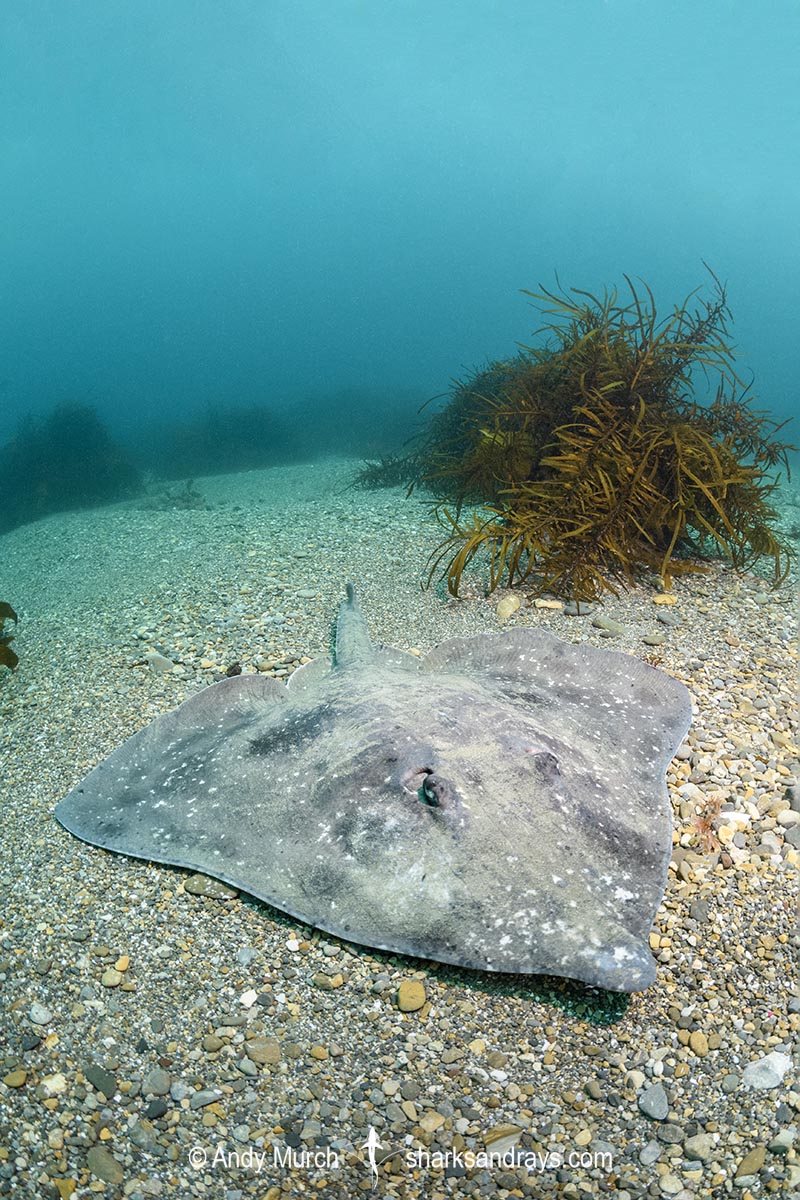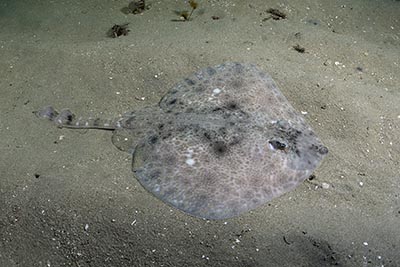Common name(s)
Melbourne Skate, Whitley’s Skate.
Accepted Binomial
Synonyms
Identification
A very large skate with a wide kite-shaped disc. Disc width 1.2 x disc length. Snout long and acutely angular with a somewhat bulbous tip. Snout length 2.2-2.6 x orbit length. Eyes small. Anterior margins of pectoral fins weakly undulate. Pectoral apices narrowly rounded or angular. Disc densely granular. No malar or orbital thorns. 1-5 nuchal thorns on midline nape. 1-3 rows of thorns along tail. Pelvic fins large. Anterior pelvic lobe much shorter than posterior lobe. Tail short, wide, and depressed with prominent lateral folds along entire length. Lateral rows of thorns positioned near skin folds. Dorsal fins large and broadly rounded. First and second dorsal closely separated or joined, positioned at tail tip.
Colour
Dorsum grey or greyish-brown, sparsely spotted with small irregular white flecks over an underlying pattern of large dusky blotches. Blotches located centrally on pectoral fins are often darker, forming rudimentary ocelli. Blotches more prominent in juveniles. Tail mostly unmarked. Ventrum pale, sometimes with dusky patches.
Size
Maximum length 200cm. Length at hatching 20cm.

Conservation Status
VULNERABLE
The Melbourne Skate (Dentiraja lemprieri) is susceptible to fishing pressure from a variety of fishing gear through most parts of its range. It is caught in large numbers in the Southern and Eastern Scalefish and Shark Fisheries, and has undergone a population reduction of 30–59% over the past three generation lengths (45 years). In some parts of its range, it is estimated to have decreased further by 81–85%.

Habitat
Temperate seas. Demersal on sandy bays and hard substrates, sometimes on rocky reefs. Usually found inshore, but recorded down to 345m.
Distribution
South Australia, from Albany to Sydney, including Tasmania.
Reproduction
Oviparous. Egg cases are approximately 22cm in length.
Diet
Crabs, octopus, and small demersal fishes.
Behavior
Usually found resting on sandy substrates, either on top or partially buried. Actively swims over kelp in search of food.
Reaction to divers
Usually very docile. Generally remains motionless or moves slowly away in the presence of divers. .
Diving logistics
As it’s common name suggests, the Melbourne skate can be found in Port Phillip Bay south of Melbourne, and occasionally at other spots on the south coast of Australia, but it is far more common in Tasmania.
Sightings frequently occur at dive sites on the Tasman Peninsula and in Bicheno Bay on the east coast of Tasmania.
What’s new
View our full list of updates
Similar species
Australian Thornback Skate Distinguished by more obtusely pointed snout, more intricate pattern of dark spots, and usually white ocelli.





